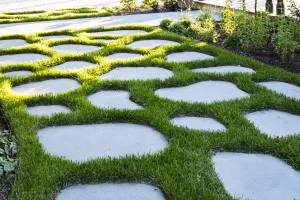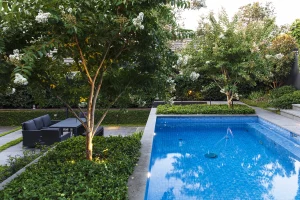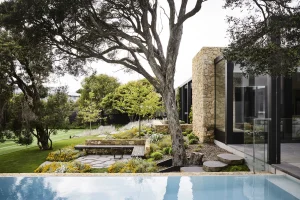I’ve been following the blog of landscape designer Thomas Rainer for years now and can honestly say it’s one of the best in the business. Rainer’s honesty and sincerity, coupled with his articulate and informative style of writing make this a blog well worth following.

In his latest entry, Rainer discusses the concept of a ‘pleasure garden’ and for the first time, shares with us his own ‘in process’ garden. He talks about how the garden was designed for him and his wife, purely for their own pleasure and refers to it as more of an “assembly of plants” rather than a design, an approach he has decided to embrace. With no real design and the garden a product of what they could source at an affordable price, what was available and what would survive in the existing conditions; their philosophy for the garden has become “plant only what gives us pleasure”.
Rainer makes an interesting and valid point about design and its limitations, which is something that has really struck a chord with me. I’ve never quite been able to put into words the feeling of going back to a garden I have designed years after its completion; the anxiety I feel before walking through the gate. I think Rainer sums it up perfectly with this quote: “Any designer who has ever installed a garden walked away, and then visited that garden five years later learns that design is not a singular vision set to paper; design is a thousand little decisions and actions made through the life of the garden.”
What a perfect summation of the transformative and intangible nature of a garden! As a designer, you produce a picture in your mind and on paper of what a garden should look like. But the truth is, it won’t end up looking exactly as you had pictured and throughout its lifecycle it will change and evolve countless times.
How a garden appears at any one time will be a unique combination of the decisions and actions made by any number of people. The homeowners, the designer, the gardeners, the landscapers, etc., will all have their own vision and therefore, make their own impact on the garden. And then of course there’s the weather!
I was thinking about all of this as we presented this sketch to clients last week. How will this garden look a few years down the track? Will it have changed significantly? Maybe the design will have been interpreted by the landscapers differently to what I had envisioned? Perhaps the gardener will have pruned the buxus balls into different shapes? The owners could decide to change all the plants…maybe it will become overgrown! Or, it could end up looking better than anything I had imagined!

I guess, in the end, part of being a landscape designer is having the ability to let go of your vision. To accept that, whilst we have some control over the starting point, the garden will be an ever changing hybrid of the decisions and actions made by many different people, weather, environmental factors and who knows what else! A garden by its very nature is not static but rather a continuously growing and evolving space that will develop its own distinct character over the passing of time and most importantly, bring pleasure to those who see it.
-Ian


